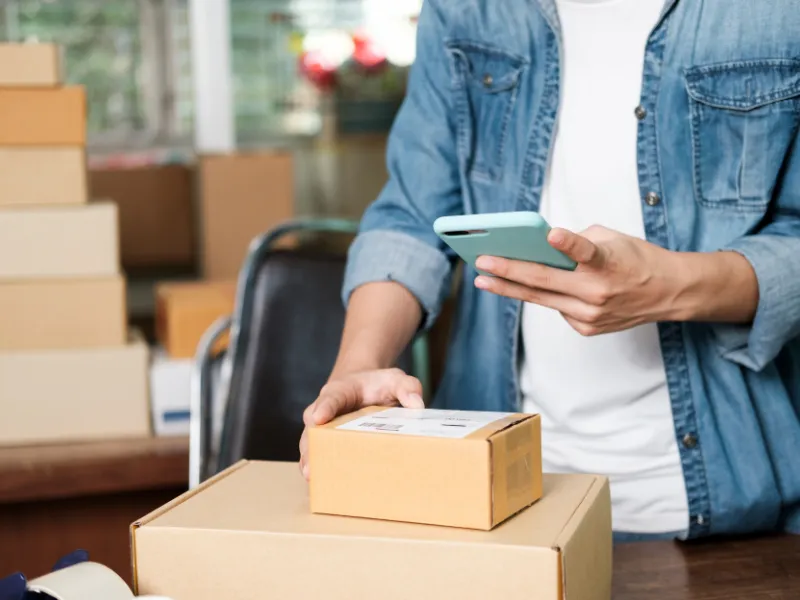In e-commerce business operation sellers take full ownership of every aspect of order handling and execution. Sellers manage product storage as well as product packaging and shipping label generation and carrier delivery coordination throughout the entire process. The management of fulfillment operates directly under seller control when they avoid third-party logistics and dropshipping practices.
Fresh sellers initiate their business activities from spaces which range from home offices to little operation facilities. To handle daily orders sellers rely on shipping label printers in combination with inventory spreadsheets and packaging materials. These practical solutions let businesses sustain affordable operations without losing direct control of their fulfillment operations.
The Pros of Handling Fulfillment Yourself
Full Control Over the Customer Experience
Self-fulfillment enables businesses to maintain full control as they choose every aspect of product presentation throughout the customer delivery process. Sellers gain full control of packaging appearance and can include inserts with their brand and check that all delivered orders reflect their quality standards.
Cost Savings for Low-Volume Sellers
The limited nature of new seller sales makes self-fulfillment an economically suitable option. New sellers enjoy the benefit of maintaining their profit margins since they do not need to handle fulfillment center expenses or minimum storage costs.
Faster Decision-Making and Adjustments
Through self-fulfillment sellers gain rapid capabilities to address changing order demands and customer responses. The ability to delay fulfillment services immediately lets sellers update their inventory and product descriptions in case their products have specific issues. The adaptable nature of self-fulfillment exists as a primary benefit for launching new products together with promotional deals.
The Cons of Self-Fulfillment for Beginners
Time-Intensive Process

One of the biggest challenges with self-fulfillment is the amount of time it consumes. From picking and packing orders to handling customer service and returns, the tasks can become overwhelming. It often leaves little room to focus on marketing, product development, or growth strategies.
Limited Scalability
As order volume increases, self-fulfillment becomes harder to manage efficiently. More sales mean more time spent fulfilling orders, which may require hiring help or finding additional storage. Without streamlined systems, the risk of delays and burnout becomes high.
Higher Risk of Shipping Mistakes
Manual fulfillment processes can lead to human error, such as incorrect items, missed orders, or damaged packages. These mistakes impact customer satisfaction and may result in refunds, bad reviews, or lost repeat business. For new sellers, such issues can hurt long-term credibility.
When Self-Fulfillment Makes Sense
Ideal Scenarios for Self-Fulfillment
Self-fulfillment works best for businesses selling handmade, personalized, or low-volume items. It’s ideal for sellers who want full control over how their brand is experienced by the customer. It also suits sellers operating in niche markets where specialized packaging or customization matters.
Signals It’s Time to Consider a Fulfillment Partner
When sellers experience consistent delays, overwhelmed schedules, or limited space, it may be time to outsource. Fulfillment partners help manage large volumes, offer faster shipping, and improve tracking and inventory accuracy. Growing businesses often reach a point where professional support becomes essential.
Tips to Maximize Efficiency if You Self-Fulfill
Organize Your Inventory System

To avoid errors, it’s critical to keep inventory organized and labeled clearly. Create a layout that allows fast access to bestsellers and separate similar items to prevent mix-ups. A smooth inventory setup can significantly improve your fulfillment speed and accuracy.
Choose Reliable Shipping Carriers
The right shipping partners can make or break your fulfillment experience. Look for carriers with dependable tracking, good delivery times, and fair pricing. It’s wise to test options before locking into one provider for all your orders.
Automate Where You Can
Even small businesses can benefit from automation tools that speed up fulfillment. Use software to print labels, sync inventory with your store, and send shipping updates. These tools help you maintain a professional edge while managing fulfillment independently.
Final Thoughts on Self-Fulfillment
Weighing the Long-Term Tradeoffs
While self-fulfillment offers more control and lower upfront costs, it also brings operational challenges. Sellers must weigh whether the effort is sustainable as the business grows. Every fulfillment method has tradeoffs that depend on the goals and resources of the seller.
Start Small, Grow Smart
For many new sellers, self-fulfillment is a smart way to learn the ropes of e-commerce. It allows full visibility into operations, giving insight into what works and what doesn’t. With experience and growth, transitioning to a fulfillment partner can unlock even greater efficiency.

